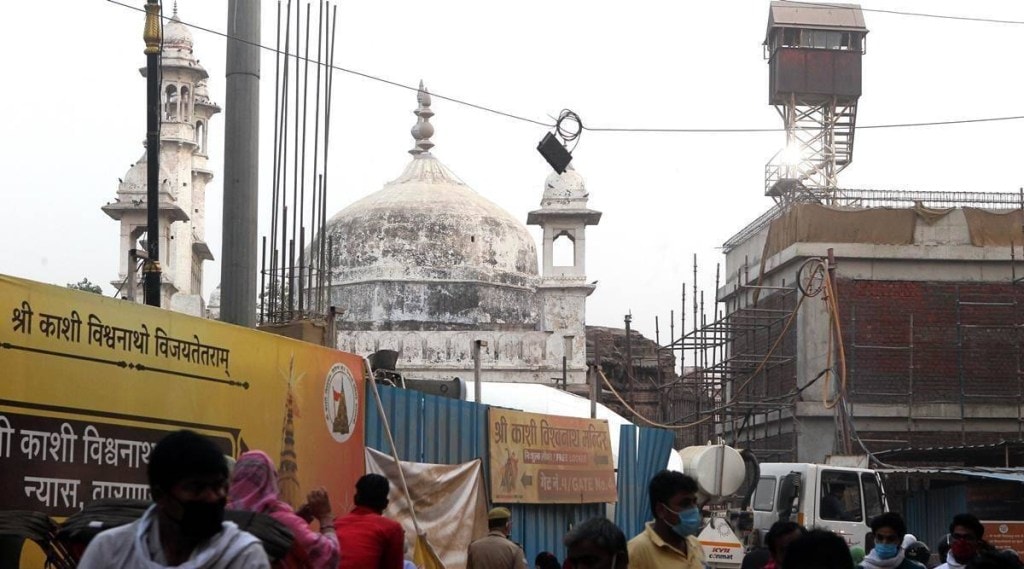Security has been beefed up in Varanasi with a district court likely to pronounce its verdict in a highly sensitive case involving the video survey of the cellar inside the Gyanvapi Mosque, which lies next to the Kashi Vishwanath temple.
The court will also decide on a petition by the Gyanvapi mosque management committee (Anjuman Intezamiya Masjid) to remove Ajay Kumar Mishra as the court commissioner for the survey. The mosque management committee has accused Mishra of nurturing a bias towards the Hindu petitioners while going about his task.
On Saturday, while on a court-mandated inspection, Mishra and lawyers representing both the communities were barred from entering the mosque for conducting a video survey. The inspection was ordered by a local court a year back after five women had approached the court asking permission to worship the Shringar Gauri, Lord Hanuman, and Nandi on a daily basis located at the back of the mosque’s western wall. The Gyanvapi mosque and its lawyers have vehemently opposed any videography inside the mosque, while the lawyers of the petitioners claim that they have the court’s nod.
A look at the timeline of events in this matter over the years:
Call for the Gyanvapi mosque to be demolished (1991) – The row first shot to prominence when a group of petitioners and local priests approached the Varanasi court to allow access inside the mosque area for the worship of Hindu deities. While arguing that the mosque was built back in the 17th century by Aurangzeb after the destruction of a portion of the iconic Kashi Vishwanath temple, one of the petitioners Vijay Shankar Rastogi said that the mosque stands on the ground where Maharaja Vikaramadity had built the temple approximately 2,050 years back. He argued that the mosque should be demolished and Hindus be granted access to the mosque land. The lawyer also pointed out that the Places of Worship (Special Provisions) Act, 1991 did not apply in this particular case as the mosque was built upon a partially ruined temple complex.
Varanasi court ruling (1997) – A trial court in Varanasi ruled that the rectifications sought by the petitioners will not apply in the face of Places of Worship (Special Provisions) Act, 1991. Soon after, several review petitions were filled and heard in court. A petition was filed in the Allahabad High Court in 1998 by the Gyanvapi mosque claiming that the matter couldn’t be resolved in a civil court. This prompted the Allahabad HC to issue a stay order on the civil court’s proceedings.
Chabootra removed near Gyanvapi Mosque sparks communal tension (2019) – Soon after Prime Minister Narendra Modi lay the foundation stone for the Kashi Vishwanath temple corridor in March, a contractor removed the chabootra near gate number 4 of the Gyanvapi complex. With the area tense over this development, the contractor re-built the chabootra the next day.
In December 2019, a month after the Supreme Court’s Ayodhya verdict, advocate Vijay Shankar Rastogi filed a new petition requesting for archaeological survey of the Gyanvapi mosque while pointing out that the Allahabad HC in 1998 had postponed a lower court decision to gather evidence in order to determine the religious past and origins of the Gyanvapi mosque.

